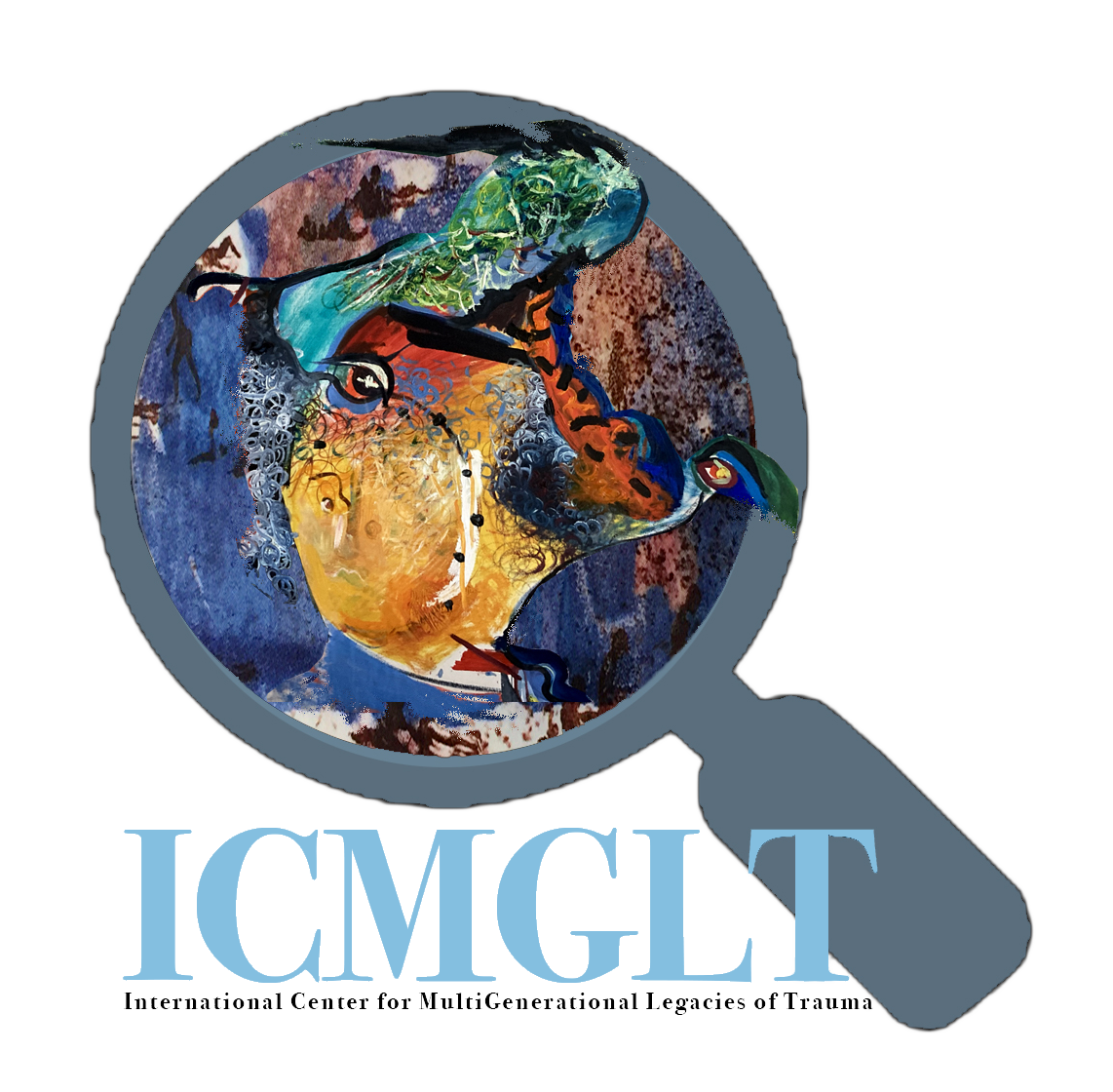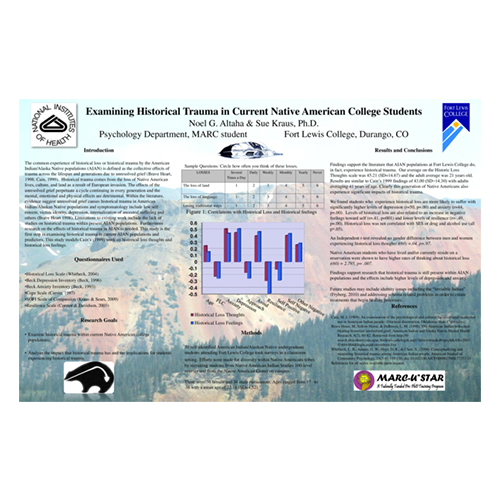Altaha, N. G. (2012). Examining Historical Trauma in Current Native American College Students. [Poster]
Introduction
The common experience of historical loss or historical trauma by the American Indian/Alaska Native populations (AIAN) is defined as the collective effects of trauma across the lifespan and generations due to unresolved grief (Brave Heart, 1998; Cain, 1999). Historical trauma comes from the loss of Native American lives, culture, and land as a result of European invasion. The effects of the unresolved grief perpetuate a cycle continuing in every generation and the mental, emotional and physical effects are detrimental. Within the literature, evidence suggest unresolved grief causes historical trauma in American Indian/Alaskan Native populations and symptomatology include low self- esteem, victim identity, depression, internalization of ancestral suffering and others (Brave Heart 1998). Limitations to existing work include the lack of studies on historical trauma within present AIAN populations. Furthermore research on the effects of historical trauma in AIAN is needed. This study is the first step in examining historical trauma in current AIAN populations and predictors. This study models Cain’s (1999) work on historical loss thoughts and historical loss feelings.
Questionnaires Used
•Historical Loss Scale (Whitbeck, 2004) •Beck Depression Inventory (Beck, 1996) •Beck Anxiety Inventory (Beck, 1993) •Cope Scale (Carver, 1997)
•SOFI Scale of Compassion (Kraus & Sears, 2009) •Resilience Scale (Connor & Davidson, 2003)
Research Goals
• Examine historical trauma within current Native American college populations.
• Analyze the impact that historical trauma has and the implications for students experiencing historical trauma.
Sample Questions: Circle how often you think of these losses.

